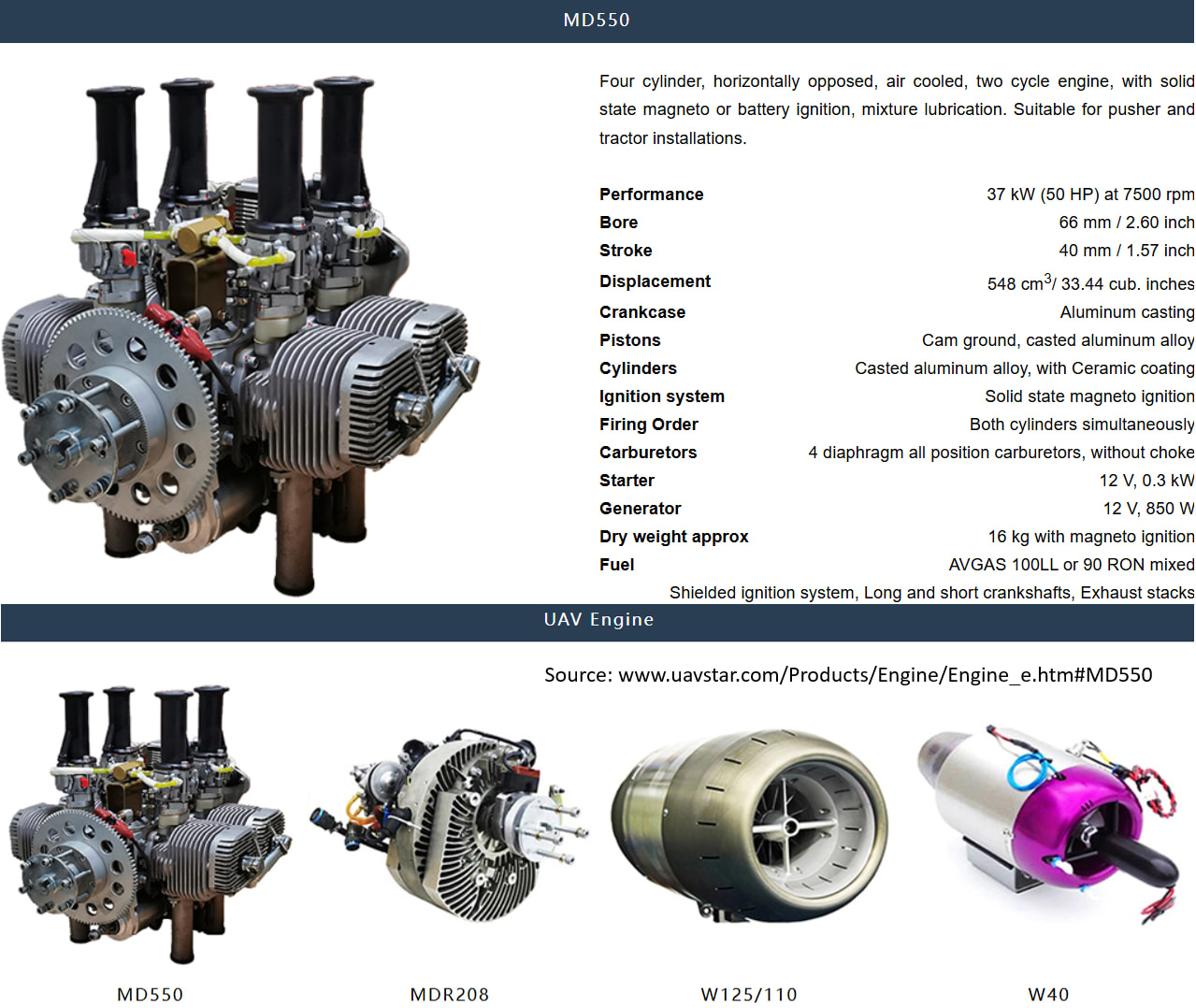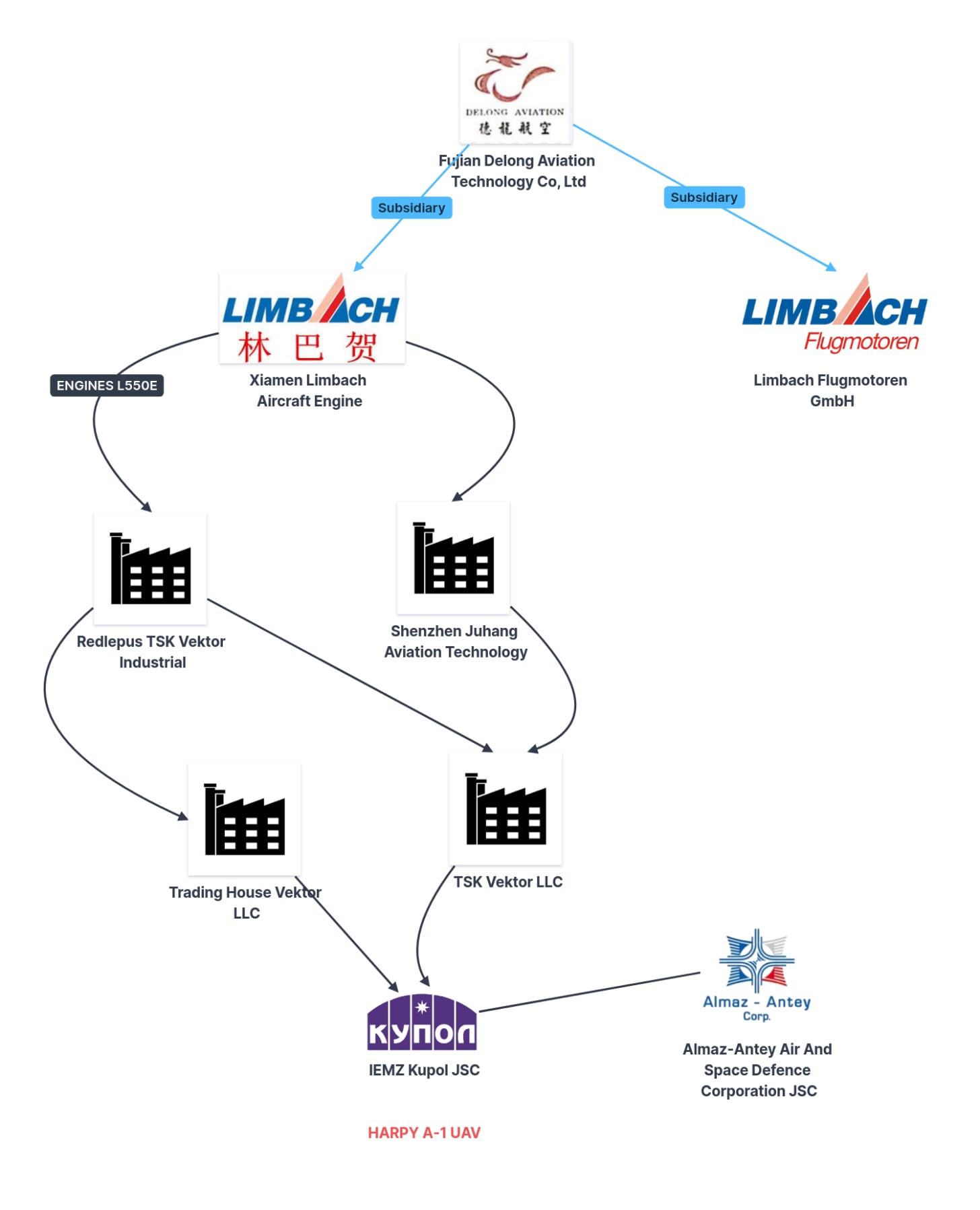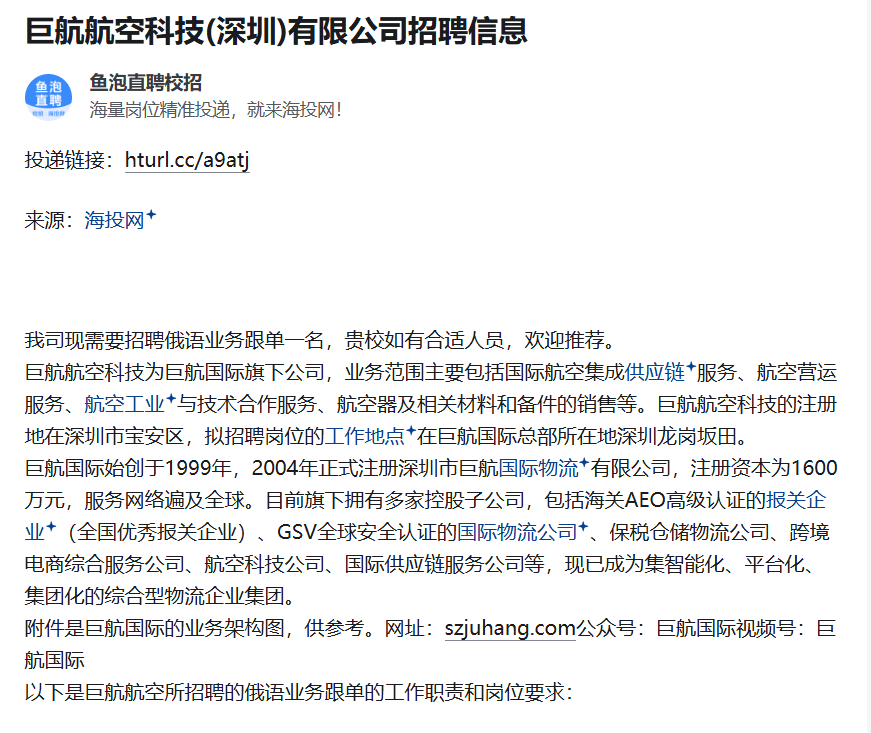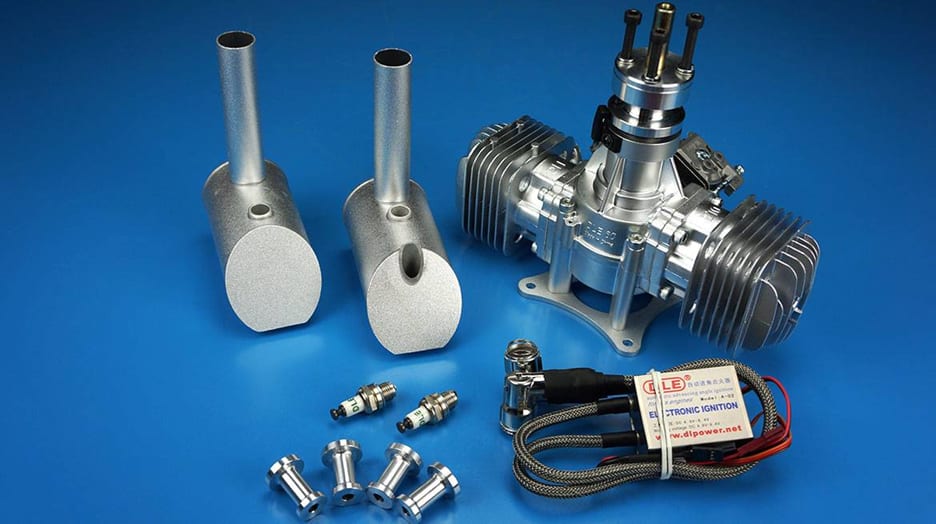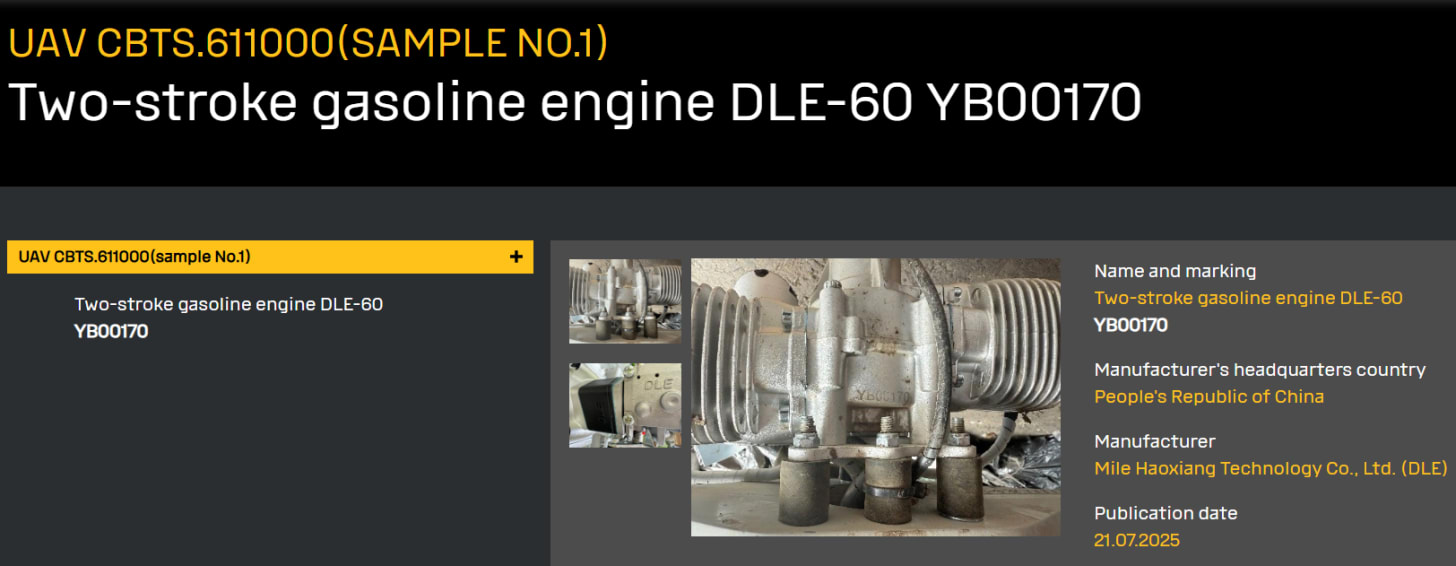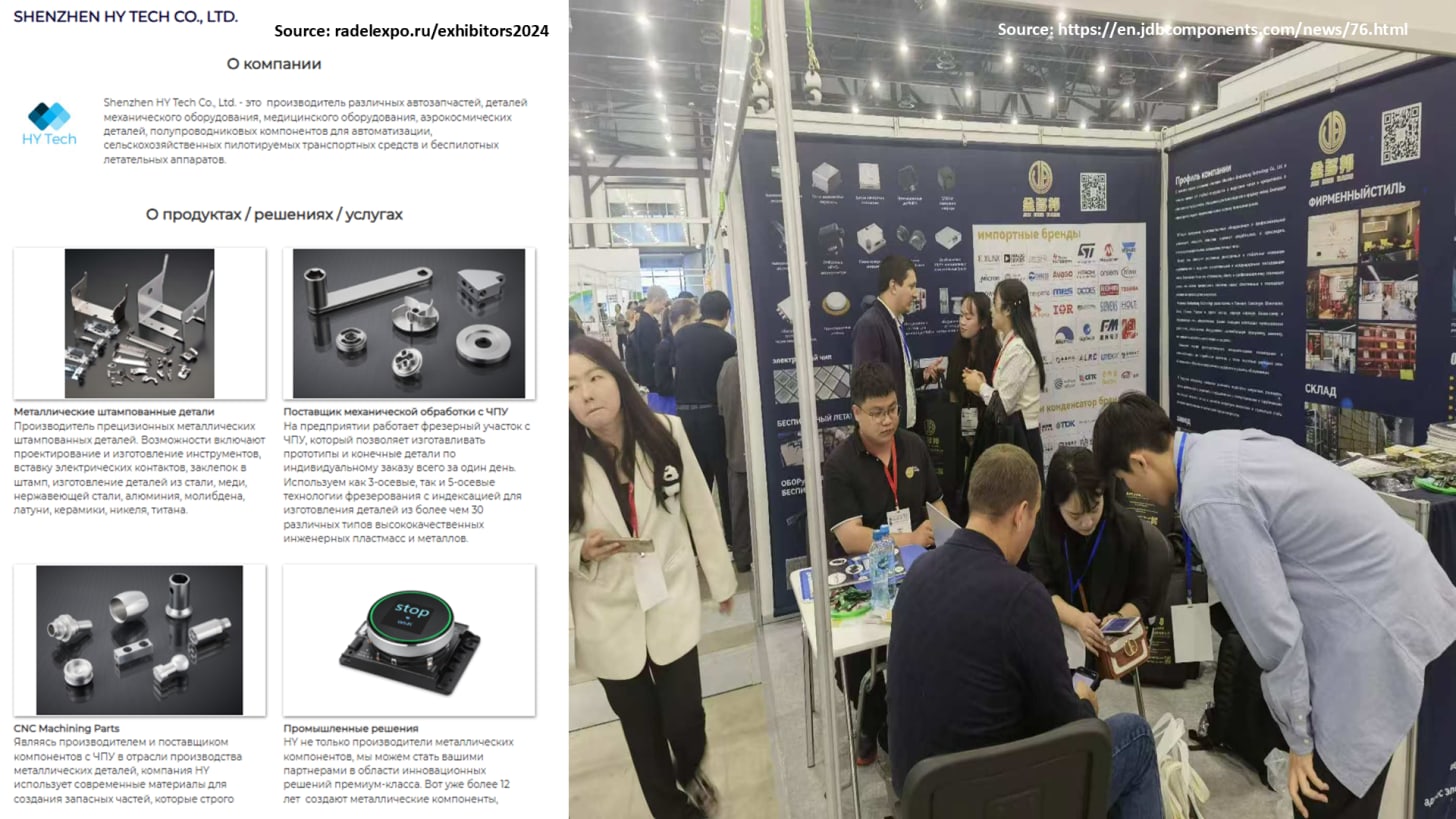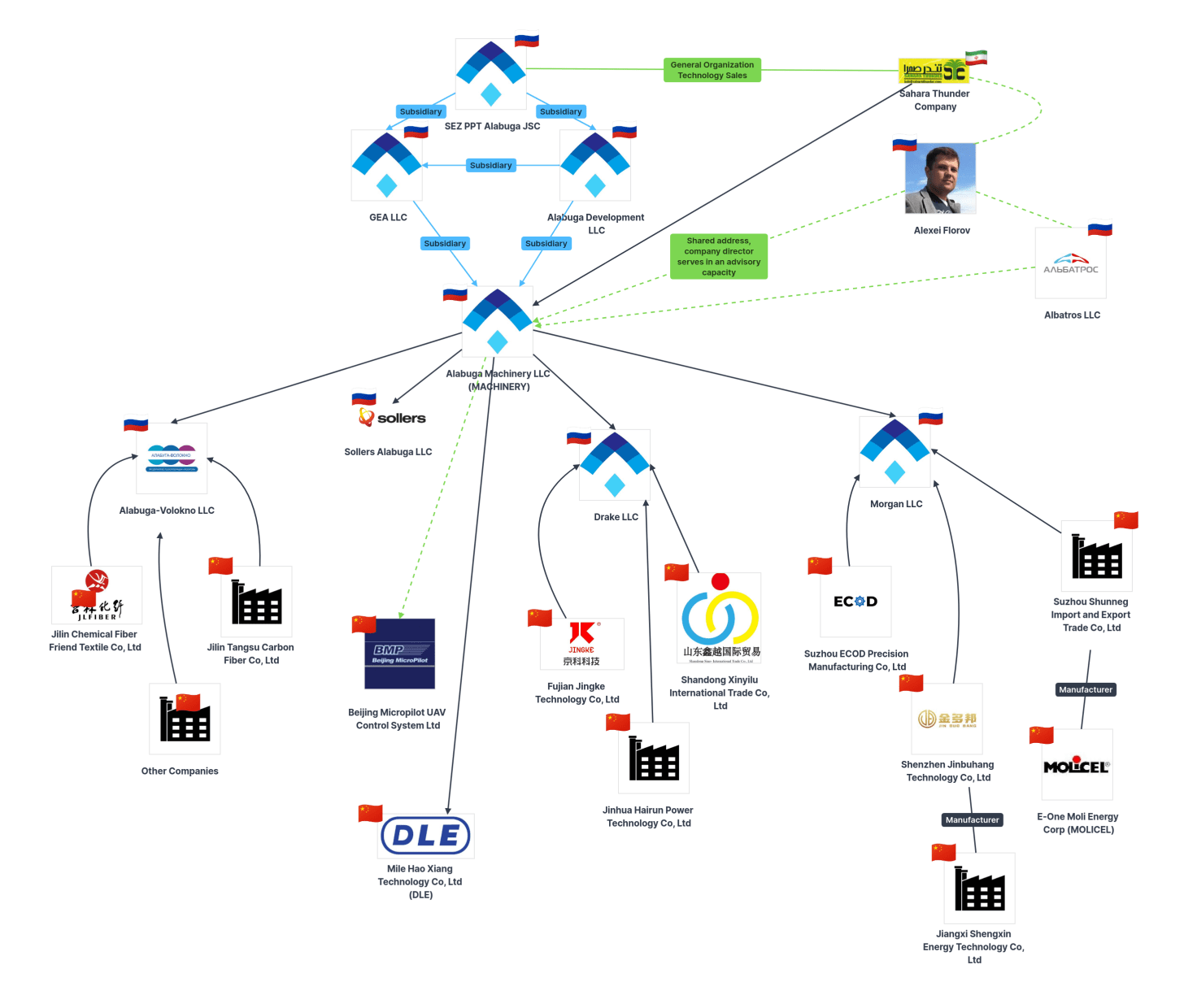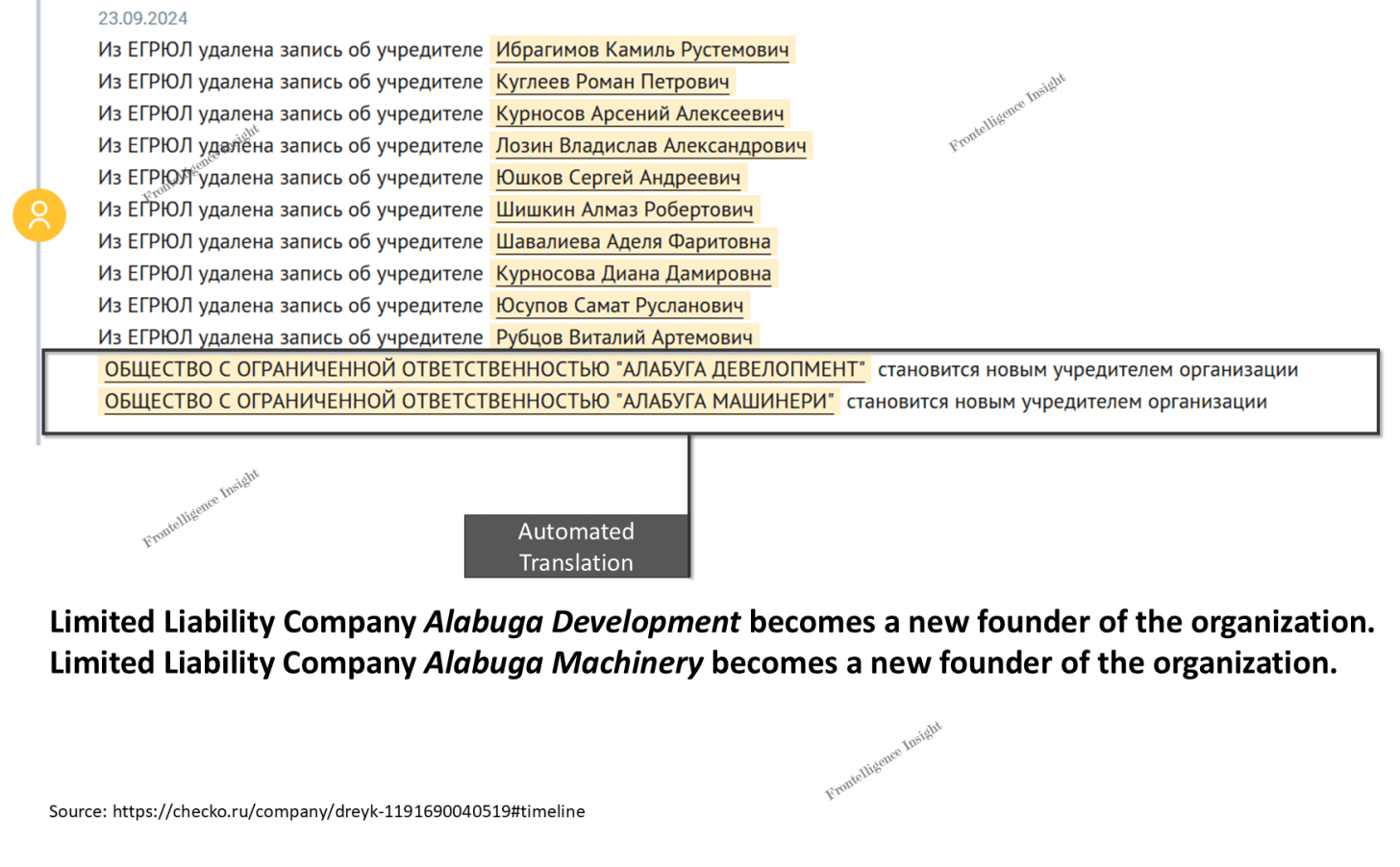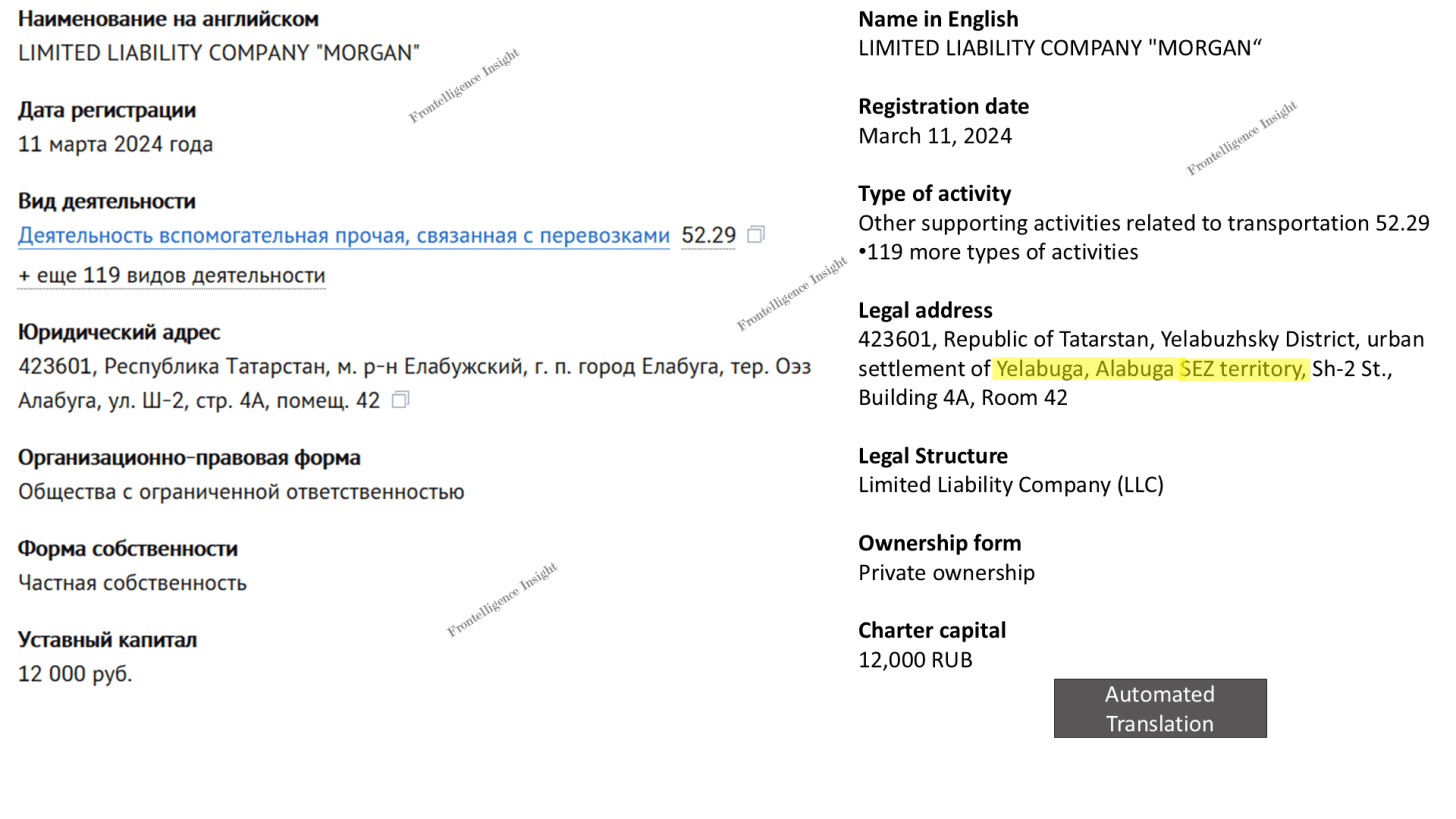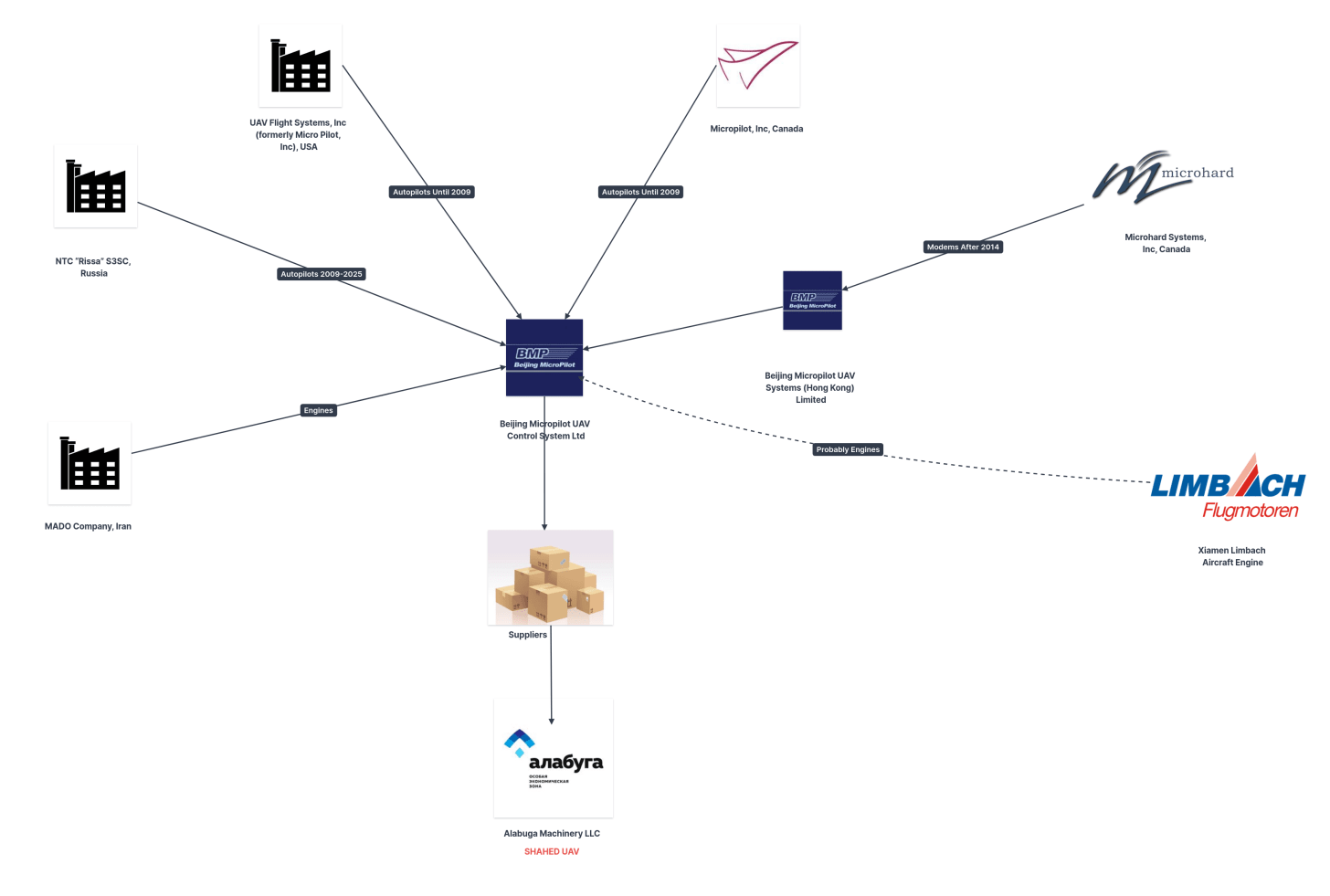Introduction
Alabuga, the heart of Russia’s Shahed production, sits inside the Alabuga Special Economic Zone near Yelabuga, Tatarstan. Inside its vast halls, assembly lines have scaled up to transform Iranian-designed Shahed-136 loitering munitions (produced locally as Geran-2), newer Geran-3 variants and other drones into domestically manufactured, high-volume output.
After Iran handed over drawings, software and production technology for Shahed-136 drones, Russia built a large-scale logistics network to support the program. At first, the focus was on importing finished drones and machine sets. Later, Moscow moved to full domestic production.
Since then, Iran’s role has decreased, limited mostly to certain supplies and consultations. Instead, China has emerged as the main external supplier, providing critical components such as engines and navigation systems. After production began in Russia, the share of Chinese parts rose sharply. At least 41 components are of Chinese origin, many of which can be found on the Ukrainian website WarSanctions, which catalogs parts with photos, manufacturer details and a searchable database.
Due the report’s size, we’ve split it into two parts: a Brief Summary with key highlights, and a full edition - Main Findings, that includes deeper detail, links, and data
Table of Contents
Introduction
I. Brief Summary
II. Main Findings
1) Key Chinese Companies Supplying UAVs and Components
a) Beijing Micropilot UAV Control System Ltd.
b) Limbach Aircraft Engine Co
c) Redlepus (Redlepus TSK Vector Industrial Shenzhen Co Ltd.)
d) Juhang Aviation Technology Co., Ltd (Shenzhen)
e) Jinhua Hairun Power Technology Company Ltd.
f) Shandong Xinyilu International Trade Co., Ltd.
g) Fujian Jingke Technology Co., Ltd.
h) Mile Hao Xiang Technology Co., Ltd.
i) Suzhou Ecod Precision Manufacturing Co. Ltd.
j) Shenzhen Jinduobang Technology Co., Ltd.
2) Russian Customers and Intermediaries
a) Drake LLC
b) Morgan LLC
c) Sollers Alabuga LLC
d) Alabuga Machinery LLC
e) Alabuga-Volokno LLC
III. Sanctions and Export Controls
IV. Summary
Sources and references
I. Brief Summary
Russia has sharply ramped up its use of Shahed (Geran), Garpia, and Gerbera UAVs, from dozens of launches in 2022 to tens of thousands per month by 2025. While Iran played a key role early on, it became clear that the only country that could scale the production was China.
One of the biggest production bottlenecks was engines and electronics, without which large-scale Shahed production would be impossible. To address this, Russia set up multiple LLCs and intermediaries to streamline industrial-scale purchases and deliveries from China
In 2024-2025, Alabuga Machinery LLC imported from China a production line for manufacturing UAV hulls, along with equipment for producing the Iranian Nasir navigation system, modules of which were later recovered from intercepted Shaheds.
In 2024 alone, Drake LLC, a Russian intermediary company purchased by Alabuga Machinery, imported aircraft engine components from China valued at $972,144. The main suppliers were Jinhua Hairun Power Technology Co. Ltd. and Shandong Xinyilu International Trade Co.
In 2024-2025, another Russian intermediary, Morgan LLC, imported goods from China for drone production, totalling $4.83 million into the Alabuga Special Economic Zone. The largest suppliers were Suzhou ECOD Precision Manufacturing and Suzhou Shunxinge Import and Export Trade
Between 2022 and 2025, Alabuga-Volokno LLC, part of Rosatom, imported roughly 3,000 tonnes of carbon fiber yarn from China. The shipments, sourced from Jilin Tangu Carbon Fiber Co. and Jilin Chemical Fiber Friend Textile Co., were valued at $21,387,850.
Based on insider data, we also discovered that Beijing Micropilot UAV Control System is not the actual manufacturer of the MD550 and MDR208 engines, serving only as a seller, while the engines are produced by Limbach Aircraft Engine Co. These engines are used in Geran-2 UAV's.
Limbach Aircraft is a key supplier of engines, parts, and technologies for Russian and Iranian UAVs, even as Russia gradually shifts to local production. The company is owned by China’s Fujian Delong Aviation Technology, which also controls Germany’s Limbach Flugmotoren GmbH.
China’s Redlepus TSK Vektor and Russia’s TSK Vektor LLC supplied Harpy UAV components totaling $32.8 million. From 2022 to 2024, Juhang Aviation Technology and TSK Vektor LLC imported $58.4 million in products, with engines like the L550e occupying roughly 40% of deliveries.
Chinese engine maker Mile Hao Xiang Technology Co., whose products are used the Gerbera UAV, shipped over $1.5 million in goods to Russia in 2022-2023, directly or via intermediaries. The main importers were Russian companies Sequoia JSC and Unikom LLC.
Shandong Xinyilu International Trade Co., Ltd, a Chinese trading company based in Shandong province, exported $6.4 million in industrial products to Russia between April 2024 and January 2025, including carbon fiber, engine parts, batteries, and electronic components.
In August 2024, Shandong Xinyilu International shipped carburetors made by Fujian Jingke Technology to Drake LLC, valued at $85,452. The shipment weighed 1,050 kilograms, which, if taken into consideration average weight of carburetor, could equip up to 1,000 UAV engines
Whether entire engines or the parts to build them, Russia’s Shahed program depends almost entirely on China. What Moscow calls 100% localized production is often just an assembly of Chinese parts.
When it comes to sanctions, the picture is murky. Many of these firms are sanctioned, but rarely in unison. Some are sanctioned by the U.S. but not the EU, others by Ukraine and the EU but not Washington. The gaps leave plenty of room for business to operate
Beijing could tighten oversight of dual-use exports such as aircraft engines by requiring export licenses, imposing stricter end-user checks, tracking products more closely and raising penalties for violations.
II. Main Findings
1. Key Chinese Companies Supplying UAVs and Components
a) Beijing Micropilot UAV Control System Ltd.
Beijing MicroPilot founded in 2001, officially specializes in UAV research, manufacturing and technical services. The company first advertised its MD550 aircraft engine in 2013. The MD550 is almost identical in appearance and technical specifications to the German Limbach L550.
In 2023, Captain Andriy Rudyak of the Ukrainian General Staff’s Center for Research on Captured and Advanced Weapons reported that, instead of the Iranian-made Mado MD550, Russian forces had begun using the MicroPilot UAV Flight Control Systems MD550 engine in Geran-2 (Shahed-136) loitering munitions produced in Russia.
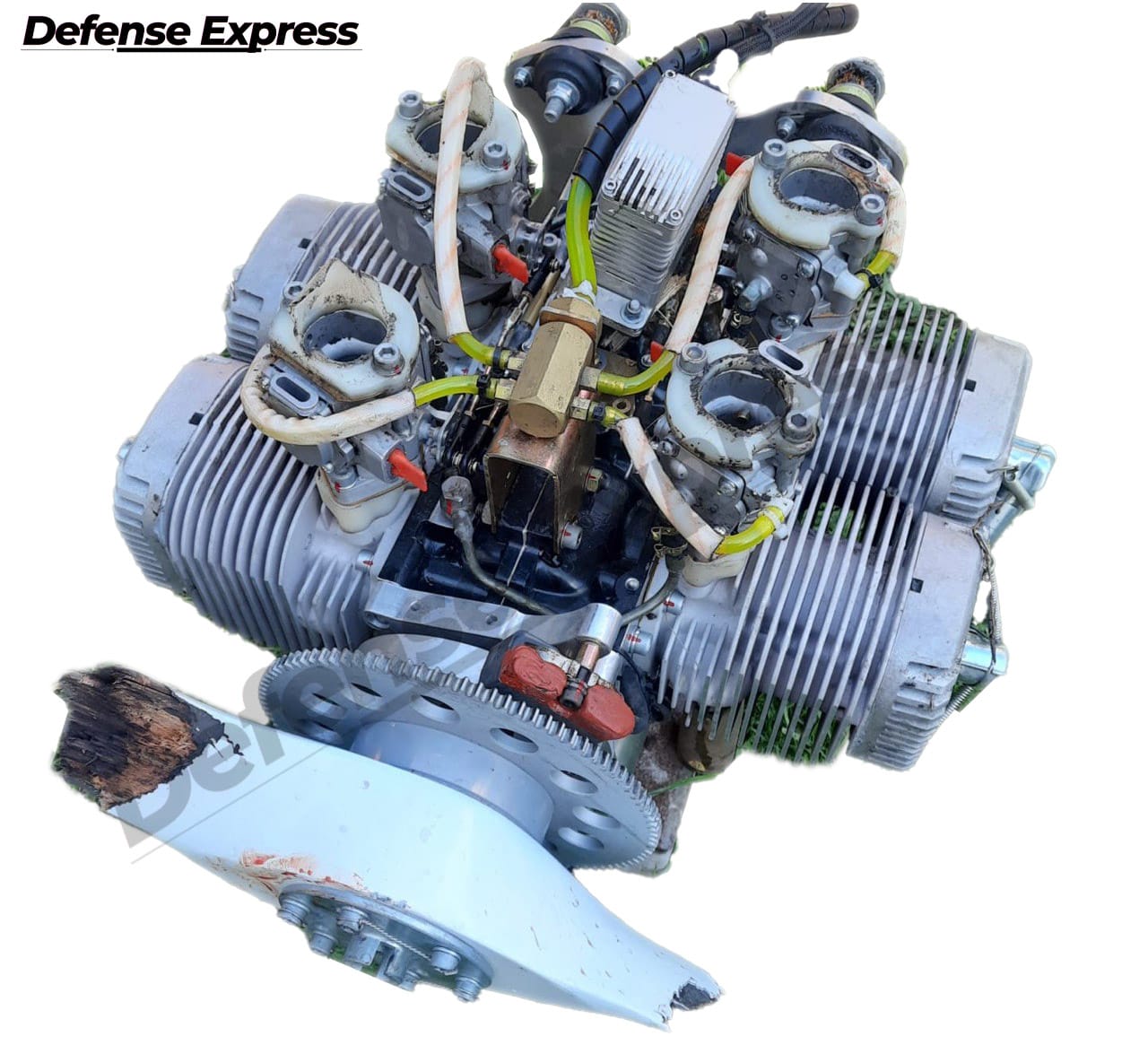
This wasn’t the only time this company appeared on the radar: according to the Iran Watch project by the Wisconsin Project on Nuclear Arms Control, the company has supplied Iran with complete UAVs, along with autopilot systems and engines.
Our insider information indicates that Beijing Micropilot UAV Control System is not the actual manufacturer of the MD550 and MDR208 engines but serves solely as a reseller. The engines are produced by Limbach Aircraft Engine Co. This is further supported by the fact that, since its inception, Beijing Micropilot has presented itself as a dealer for American and Russian autopilot developers. Furthermore, in 2015, the company began advertising engines as Limbach 550 instead of MD550, likely because Xiamen Limbach Aviation Engine Co. started producing them in China in 2012. Since then, Beijing Micropilot’s website has alternated between listing the engines as Limbach 550 and MD550.
b) Limbach Aircraft Engine Co. (also known as Xiamen Limbach Aviation Engine Co.)
The company was founded on 23 June 2012. Its main specialisation is the production of aircraft engines. Thanks to the data from the US OFAC (Office of Foreign Assets Control), we know that Limbach Aircraft supplied engines through Chinese intermediaries such as Redlepus TSK Vektor Industrial and Shenzhen Juhang Aviation Technology to the Russian enterprise JSC IEMZ Kupol, which produces Harpy (Garpia) drones. According to the treasury report, the imports to Russia were carried out through the company TSK Vektor LLC. Limbach Aircraft is wholly owned by Fujian Delong Aviation Technology Co., Ltd, which also owns the German company Limbach Flugmotoren GmbH, one of the world's leading manufacturers of aircraft piston engines, which is engaged in both their development and maintenance
In 2014, Limbach Aircraft patented the design of a small two-stroke four-cylinder aircraft engine. Although the patent itself does not specify a specific model, the drawings in the document are identical to those used in the descriptions of the L550e engine:
Data from the Chinese analytics platform Qizhidao shows that the company has received 17 government subsidies, including in 2025. More notably, it plans a major production expansion: designing of the Limbach Aviation Technology Park began in June 2025. The facility, covering roughly 108,000 square meters, is set to expand the company’s production of aircraft engines.
c) Redlepus (Redlepus TSK Vector Industrial Shenzhen Co Ltd.)
As mentioned earlier, a Russian company with very similar name - TSK vector has been used as intermediary between Russian JSC IEMZ Kupol and Limbach Aircraft to supply drone engines. Further investigation has shown that there is one company with very similar name, albeit registered in China, exports to Russia.
According to the US treasury report, , TSK Vektor has imported numerous shipments from Redlepus into Russia since the beginning of 2024, including electronic and mechanical components with UAV applications such as aircraft engines, parts of automatic data processing machines, and electrical components. The open-source data confirms that Redlepus has exported over 5.53 million worth of goods in 2024 - and 100% of its exports went to Russia only
d) Juhang Aviation Technology Co., Ltd (Shenzhen)
This Chinese company specializing in aviation spare parts, materials, and components exported $58.4 million worth of products to Russia between 2022 and 2024. One of its main customers, TSK Vektor LLC, is linked to supplying equipment for the Izhevsk Electromechanical Plant Kupol, a manufacturer of Harpy (Garpia) drones.

During this period, TSK Vektor imported $51.1 million in products, including aircraft engines, engine components, and electrical equipment such as control systems, electric motors, telecommunications gear, and video systems. Engines accounted for nearly 40% of all deliveries from Juhang Aviation Technology to TSK Vektor. In 2023 and 2024, the company supplied engines, particularly the L550e model, and components valued at roughly $22 million.
As of August 2025, the company’s job postings show an active search for Russian-speaking candidates.
e) Jinhua Hairun Power Technology Company Ltd.

The company was incorporated in February 2014 in China. Between June and August 2024, it exported 685,609 engine parts, cylinders and piston kits to Drake LLC, a Russian firm that will be examined later in this investigation. All of these parts are used in reciprocating engines, the type commonly found in Geran/Shahed drones and similar models.
f) Shandong Xinyilu International Trade Co., Ltd.
A Chinese trading company registered in Shandong province, it began exporting to Russia in April 2024. Its only Russian buyers are Drake LLC and Morgan LLC, both based in the Alabuga Economic Zone.
According to a closed report detailing exports, between April 2024 and January 2025 the company shipped $6.4 million in industrial goods, including carbon fiber, engine parts, batteries and electronic components. Customs records show that some items, such as lithium-polymer batteries, were explicitly labeled for use in the “special military operation.”
One of the export codes used was 852910, covering GNSS antennas from Harxon Corporation, an item listed on the Common High Priority Items List.
g) Fujian Jingke Technology Co., Ltd.
This Chinese firm makes motorcycle carburetors, and appears in non-public customs report as a supplier to Russia. The records show that in August 2024 Shandong Xinyilu International shipped carburetors manufactured by Fujian Jingke to Drake LLC, the Russian company mentioned earlier, valued at $85,452. The shipment weighed 1,050 kilograms. Given that a single carburetor weighs less than 1 kilogram, that volume could equip as many as 1,000 UAV engines.
h) Mile Hao Xiang Technology Co., Ltd.
The company specializes in developing and producing aircraft engines for UAV’s under its DLE brand. These are two-stroke gasoline engines with displacements ranging from 20 to 222 cm³. Mile Hao Xiang holds “high-tech” status in China and benefits from local tax incentives and grants.
Engines from the company have been identified in Gerbera-type UAVs. Customs data show that between December 2022 and November 2023, Russia imported more than $1.5 million worth of aircraft engines from this manufacturer, including $151,256 directly from Mile Hao Xiang. The largest channel for DLE shipments was Yiwu City Duniang Trading, which supplied Russia with more than $960,000 in products.
In July 2025, the Ukrainian military released images of a two-stroke DLE-60 gasoline engine with serial number YB00170, recovered from an intercepted Gerbera drone. The manufacturer was identified as Mile Haoxiang Technology.
i) Suzhou Ecod Precision Manufacturing Co. Ltd.
Suzhou Ecod specializes in high-precision manufacturing of metal and plastic parts made to customer specifications. The company provides online services in CNC machining, EDM, laser cutting and flat grinding, and is certified under ISO 9001 and ISO 13485 standards.
Ecod began supplying Russia in August 2024. Since then, it has shipped $1.4 million worth of products, primarily aluminium parts delivered under a state defense order. Nearly all of the shipments - 99.8%, went to Morgan LLC, a Russian firm in Alabuga, that supplies components for UAVs.
On 4 July 2025, the Security Service of Ukraine reported the discovery of parts with ECOD markings in the downed UAV.
j) Shenzhen Jinduobang Technology Co., Ltd
According to its official website, Shenzhen Jinduobang Technology specializes in the production and sale of high-tech electronic components and equipment. The company supplies chips, sensors, interface devices, and other components from well-known manufacturers including Microchip, Realtek, STMicroelectronics, and Xilinx.
Customs data show that in January 2025, the company shipped two batches of lithium-polymer batteries totaling 7,800 units, valued at $91,171. The shipments were labeled as “for the needs of a special military operation,” with Morgan LLC listed as the buyer.
Although Shenzhen Jinduobang positions itself primarily as a chip supplier, the company’s certificates (like ISO 9001, patents, product testing reports, and material conformity certificates) indicate it also produces bushings, bearings, and other metal components.
A photo on its exhibitions page shows a booth with Russian-language signage promoting UAV products. The image, uploaded in September 2024, coincides with the company’s participation in RADEL, a specialized Russian electronics trade event.
2. Russian customers and intermediaries
The Alabuga Special Economic Zone is an industrial and military hub that benefits from tax and customs breaks. It hosts key facilities for the production and assembly of Shahed drones and other UAVs in Russia. Yet, as shown earlier, this output would be impossible without a steady flow of Chinese parts, large and small, used both to set up production and to keep it running. To secure deliveries to Alabuga, Russia relies on a network of intermediaries and exporters that procure the components needed for mass production. Below is a list of Russian companies central to this supply chain.
a) Drake LLC
Drake LLC was founded by a group of recently graduated students and largely remained under the radar. Its profile changed after a shift in ownership: the company changed ownership to ALABUGA Development and ALABUGA Machinery, both based in the Alabuga Special Economic Zone in Tatarstan, a hub known for Russia’s Shahed program and other UAV production.
Since then, Drake LLC has shifted its focus to supplying components used in the production of Shahed drones. According to customs records, between June and November 2024, the company imported piston aircraft engine parts, fuel pumps, carburetors, rubber seals, hardware, and other components from China, with a total declared value of $972,144. While the declarations do not specify exact engine models, the parts are described as fitting pistons of two-stroke engines with a capacity of 50 hp - a clear match for the MD550 engines used in Shahed drones.
In December 2024, Drake LLC also imported 55 tons of carbon fiber fabric from Yixing Huaheng High-Performance Fiber Weaving Co., Ltd., valued at $3,423,223. The shipment was handled by Shandong Xinyilu International Trade Co.
b) Morgan LLC
The company was registered in Russia’s Alabuga Special Economic Zone in March 2024. Its official activity is listed as “Other auxiliary activities related to transportation,” suggesting a possible logistics or transport support role. The actual scope of its operations, however, remains unclear. Ukrainian intelligence reports that Morgan LLC is involved in supplying components for UAVs.
Export-import records show that between August 2024 and January 2025, the company imported goods from China into the Alabuga Economic Zone totalling $4.83 million.
Key imports:
Aluminum products — $1.28 million, the largest share. Supplied by Suzhou ECOD Precision Manufacturing Co., Ltd. One shipment, arriving November 27, 2024, was declared as defense-related under the state defense order;
Lithium-polymer batteries — 7,800 units valued at $980,270, labeled for use in a “special military operation,” as Russia describes its war in Ukraine;
Manufacturer: Jiangxi Shengxin Energy Technology Co., Ltd.; supplier: Shenzhen Jinduobang Technology Co., Ltd. Additionally, 140,000 batteries from Taiwan, worth $890,000 and manufactured by E-One Moli Energy Corp., were sent to Suzhou Shunxinge Import and Export Trade Co;
GNSS antennas for GPS and GLONASS navigation, suitable for UAV control systems, valued at $635,733;
Insulated electrical conductors worth $625,402, listed in customs documents as intended for a “special military operation“;
Galvanic equipment and mechanical components, including transmission parts, gears, couplings, and gearboxes.
In September 2024, Morgan LLC filed a declaration of conformity with the Eurasian Economic Union for MIMXRT1052CVL5B and AD9361BBCZ chips manufactured by Shandong Xinyilu International Trade Co. These chips, originally produced by NXP Semiconductors and Analog Devices, have been identified in Shahed-136 and Shahed-238 drones. With no official import records in Russia, it is likely that the components were brought into the country through “grey” channels.
c) Sollers Alabuga LLC
Sollers Alabuga LLC, an automotive manufacturer based in the Alabuga Special Economic Zone and part of the Sollers Group, specializes in the full cycle of light commercial vehicle production. The company also operates an engine assembly facility acquired from Ford in 2021.
In the first quarter of 2023, it began supplying products to Alabuga Machinery LLC. These deliveries totaled approximately $370,000. With its production capabilities and technical infrastructure, the company is able to manufacture and supply engine components, including pistons, piston rings, crankshafts, aluminum crankcases, and other housing elements. It is likely that these components were among those delivered to Alabuga Machinery LLC.
d) Alabuga Machinery LLC
Alabuga Machinery LLC, an industrial enterprise registered in the Alabuga Special Economic Zone in October 2022, is owned by Alabuga Development LLC, a subsidiary of Alabuga SEZ PPT JSC, and GEA LLC.
Between 2024 and 2025, the company systematically registered declarations of conformity for its production equipment. These documents are required under Eurasian Economic Union regulations, including Russian law, to legally import and operate industrial goods. Under Russian law, such declarations can be transferred to another company via power of attorney, allowing Alabuga Machinery to potentially source foreign components through intermediaries or partner structures.
The list of executed declarations includes several pieces of foreign technological equipment for industrial production:
A heat treatment line, model BQ-RJH-75, and a low-pressure casting line, model BQ-J452-2PWSG, both manufactured by Nanjing Boqiao Machinery Co., Ltd. (18 October 2024).
A set of equipment for producing the Nasir high-precision navigation system, an Iranian satellite navigation system capable of autonomous geospatial positioning with meter-level accuracy. Nasir modules have been recovered from Shahed-136 (Geran-2) drones shot down in Ukraine.
e) Alabuga-Volokno LLC
Alabuga-Volokno LLC, a carbon-fiber plant in the Alabuga Special Economic Zone, is a subsidiary of Yumatex JSC, part of Rosatom and Russia’s largest carbon-fiber producer.
According to Sahara Thunder documents, it is the main supplier of raw materials for the Shahed project. From March 2022 to January 2025, the company imported about 3,000 tonnes of synthetic yarn from Chinese producers Jilin Tangu Carbon Fiber Co. and Jilin Chemical Fiber Friend Textile Co., worth $21.4 million. Roughly 12% came directly from manufacturers, with the rest routed through intermediaries including Hebei Jigao Trading, Jilin Hongsheng Trading, Shijiazhuang Dingwei Trading, and Yongji Rongdu Commercial & Trading.
III. Sanctions and Export Controls
Sanctions against Russian drone production have been fragmented, resulting in drop of their effectivness. The patchwork of restrictions has allowed companies to adapt, continuing to develop critical components and supply UAV manufacturers. Russian firms, with the backing of intelligence services, have also employed creative methods to disguise drone production- sometimes successfully. In one notable case, the U.S. sanctioned a company in December 2023 that did not actually exist.
Andrey Sapozhnikov case is a good example of how these workarounds operate in practice. He was appointed CEO of Drake LLC while also heading GEA LLC, a founding firm of Alabuga Machinery. After sanctions were imposed, he was formally dismissed in September 2024 but stayed on as Drake’s “project manager,” continuing to sign import contracts.
China’s Export Control Law, in effect since October 2020, established a unified framework for regulating the export of sensitive goods and technologies, including dual-use products and military equipment. As part of this framework, on July 31, 2024, China’s Ministry of Commerce, General Administration of Customs, and the Central Military Commission’s Department of Armaments Development jointly issued Notice No. 31 (2024), tightening controls on unmanned aerial vehicles. The notice, which took effect on September 1, 2024, banned exports of aircraft engines with more than 16 kW of continuous power specifically designed for certain UAVs. For comparison, the MD550 (Limbach L550) engines used in Shahed drones produce 37 kW.
The list of prohibited goods cites HS codes 8407101010 and 8407102010 for internal combustion engines with spark ignition, yet it does not cover all potential UAV engine categories. TSK Vektor LLC, for instance, imported Limbach L550 engines from Juhang Aviation Technology for the Harpy drone under HS code 8407100003, which is not on the banned list.
This exposes gaps in China’s export controls, whether deliberate or not. Despite tighter regulations, incomplete HS code coverage creates loopholes that allow Russian manufacturers to continue obtaining critical UAV technologies, even under formal bans.
IV. Summary
Iran’s transfer of Shahed loitering munition (drones) to Russia has influenced the course of the war in Ukraine. These drones represent a new model of warfare: inexpensive, asymmetric, and deployable at scale. Without full air superiority, Shaheds have allowed Russia to carry out sustained strikes, targeting Ukrainian cities and critical infrastructure. By 2025 launches had grown from dozens in 2022 to tens of thousands per month, yet engines and flight electronics remained the principal bottleneck - something that only Chinese firms could resolve.
Experience with Shaheds paved the way for a domestically produced drone, the Harpy (Garpia). Externally similar to the Shahed, it features Russian and Chinese electronics and navigation systems, including the Chinese L550e engine from Xiamen Limbach Aircraft Engine Co. The Harpy (Garpia) is manufactured by the Izhevsk Electromechanical Plant Kupol, part of the Almaz-Antey state corporation.
China plays a decisive role in this program, supplying critical components despite its official neutrality. Redlepus Vector Industry in Shenzhen provides engines, avionics, and electronics.
Russia’s collaboration with Iran and China is both a sanction-evasion strategy and a critical enabler of its aerial operations. Simple to produce yet deployable at scale, these drones have become a bigger part of attritional war. While not directly involved in the war, China remains a vital supplier, providing parts without which this model of warfare would be impossible.
To address this problem, The West needs to coordinate its targeting efforts, and act as a unified front, targeting both Russian UAV manufacturers and the Chinese companies supplying components. Measures should include tighter export controls on dual-use technologies, multilateral targeted sanctions, and diplomatic pressure on Beijing. Secondary sanctions should also be considered against Chinese manufacturers and owners who facilitate the transfer of Western technology, enabling the production of weapons that threaten not only Ukraine but potentially NATO countries, and East Asian region in general.
Thank you for reading. If you found this report valuable, consider supporting us as a paid subscriber. We are funded solely by public subscribers and donors, which allows us to produce high-quality investigative reporting without any external agenda. Every subscription counts and helps us create more reports like this.
This Substack is reader-supported. To receive new posts and support my work, consider becoming a free or paid subscriber.
Sources and references:
Army TV. (09.2023). Briefing of the Center for Research on Captured and Prospective Weapons and Military Equipment. YouTube.
UAVStar. Limbach L550e two-cycle engine. Retrieved July 30, 2025, from [www.uavstar.com/Products/...](https://www.uavstar.com/Products/Engine/Engine_e.htm)
Iran Watch. (2023, February 23). Beijing MicroPilot UAV Flight Control Systems. Retrieved August 21, 2025, from https://www.iranwatch.org/suppliers/beijing-micropilot-uav-flight-control-systems
U.S. Department of the Treasury. (2025, August 18). XIAMEN LIMBACH AIRCRAFT ENGINE CO., LTD. [Entity Listing]. Office of Foreign Assets Control. Retrieved August 19, 2025, from https://sanctionssearch.ofac.treas.gov/Details.aspx?id=51298
U.S. Department of the Treasury. (2024, October 17). Treasury targets actors involved in drone production for Russia’s war against Ukraine. Retrieved August 11, 2025, from https://home.treasury.gov/news/press-releases/jy2651
Military Drones. Limbach L550E engine. Retrieved July 21, 2025, from https://www.militarydrones.org.cn/limbach-l550e-p00788p1.html
Qiye Zhidao. Beijing MicroPilot UAV flight control systems. Retrieved August 01, 2025, from https://qiye.qizhidao.com/subsidy/acaa719f7260aa8ec3e7dc7b69f66092.html
Trademo. Redlepus TSK Vector Industrial Shenzhen Co Ltd. Retrieved July 03, 2025, from [www.trademo.com/companies...](https://www.trademo.com/companies/redlepus-tsk-vector-industrial-shenzhen-co-ltd/44638381)
Trademo. Juhang Aviation Technology Co Ltd. Retrieved July 03, 2025, from [www.trademo.com/companies...](https://www.trademo.com/companies/redlepus-tsk-vector-industrial-shenzhen-co-ltd/44638381)
Zhihu. (2023, February 19). 巨航航空科技(深圳)有限公司招聘信息. Retrieved August 10, 2025, from https://zhuanlan.zhihu.com/p/634130598
DLE. DLE60 RC model engine. Retrieved August 02, 2025, from https://www.dlengine.com/en/rcengine/dle60/
Ukrainian Ministry of Defence. (2025, July 21). Two-stroke gasoline engine DLE-60 YB00170. Retrieved July 22, 2025, from https://war-sanctions.gur.gov.ua/en/components/6365
Security Service of Ukraine. (2025, July 4) From https://www.facebook.com/SecurSerUkraine/posts/pfbid02JEYAqWjxDhdtF2jLC1twpnmD528mn38pjN7WadHaKfdtDu1CdZWPC8EkZWAnGwjbl
Shenzhen HY Tech Co., Ltd. (2024). Exhibitor profile. Radelexpo. Retrieved August 19, 2025, from https://radelexpo.ru/exhibitors2024/85495/
Shenzhen Jinduobang Technology Co., Ltd. (2024, September 18). Exhibition participation announcement. Retrieved August 12, 2025, from https://en.jdbcomponents.com/news/76.html
Drake LLC. Company profile. Checko. Retrieved August 10, 2025, from https://checko.ru/company/dreyk-1191690040519
ООО "Морган". Checko. Retrieved July 16, 2025, from [checko.ru/company/m...](https://checko.ru/company/morgan-1241600010970)
Ukrainian Ministry of Defence. (2024, September 5). Microcontroller MIMXRT1052 CVL5B 1N04V CTDR2138B. Retrieved July 14, 2025, from https://war-sanctions.gur.gov.ua/components/5084
Ukrainian Ministry of Defence. (2024, June 1). AD9361BBCZ dual-channel receiver. Retrieved July 14, 2025, from https://war-sanctions.gur.gov.ua/ru/components/4411
China National Machinery Industry Corporation. (2025, June 10). China United Engineering Co., Ltd. undertakes the design of the Limbach aircraft engine technology industrial park project. Retrieved August 20, 2025, from https://www.sinomach.com.cn/xwzx/zgsdt/2025_qydt/202506/t20250610_550259.html
Kostrinsky, G. (2023, June 7). Соллерс перезапустит производство двигателей в Алабуге. Ведомости. https://www.vedomosti.ru/auto/articles/2023/06/07/979141-sollers-perezapustit-dvigatelei
Iran.ru (2012, May 31). В Иране состоялась презентация отечественной навигационной спутниковой системы. Retrieved July 10, 2025, from https://www.iran.ru/news/politics/80934/V_Irane_sostoyalas_prezentaciya_otechestvennoy_navigacionnoy_sputnikovoy_sistemy
OpenSanctions. (2024, February 28). Dolphin Alabuga LLC. Retrieved July 28, 2025, from https://www.opensanctions.org/entities/NK-JcaSHk5xUvZSWyjEf9Tqhm/
Additional Resources:
Albright, D., Anokhin, I., & Faragasso, S. (2024, September 26). Update: Alabuga’s production rate of Shahed 136 drones. Institute for Science and International Security. [isis-online.org/isis-repo...](https://isis-online.org/isis-reports/update-alabugas-production-rate-of-shahed-136-drones)
Albright, D., & Faragasso, S. (2024, July 15). Russian company Drake LLC’s procurements for JSC Alabuga’s military drone projects. Institute for Science and International Security. https://isis-online.org/isis-reports/russian-company-drake-procurements-for-jsc-alabuga
Russia Customs Import Statistics and Data
Dreyk LLC. (2022, February 28). Бухгалтерский отчет за 2021 год. Audit-it.ru. https://www.audit-it.ru/buh_otchet/1646047020_ooo-dreyk
Woźniak, M., & Falkowski, K. (2024, November 17). EU-China Affairs Review November 2024. Institute of New Europe. https://ine.org.pl/en/eu-china-affairs-review-november-2024-2
Ministry of Commerce of the People's Republic of China. (2020, October 17). Export Control Law of the People's Republic of China [中华人民共和国出口管制法]. Retrieved from https://exportcontrol.mofcom.gov.cn/article/zcfg/gnzcfg/flfg/202111/226.html

